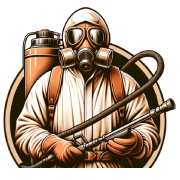Signs of Raccoons in Attic: How to Identify an Infestation
If you suspect that there may be raccoons living in your attic, it’s important to take action as soon as possible to avoid any potential damage or risks to your health and safety. Here are some signs to look out for:- Noises: Raccoons are active at night, so if you hear scratching, thumping, or rustling sounds coming from your attic in the evening or early morning hours, it could be a sign that there are raccoons living there.
- Droppings: Raccoon droppings can be found in your attic or along your roofline. They are usually dark in color, about the size of a grape, and contain undigested food particles.
- Damage: Raccoons can cause significant damage to your attic, including torn insulation, chewed wires, and damaged roofing materials. If you notice any of these signs, it’s important to take action to prevent further damage.
- Entry points: Raccoons are skilled climbers and will often gain entry to your attic through holes or gaps in your roofline, soffits, or vents. Check for any signs of damage or openings in these areas.
Raccoon Control Methods
There are several methods you can use to control a raccoon infestation in your attic:- Humane Traps: Live traps can be used to capture raccoons, which can then be released back into the wild in a safe location.
- Repellents: There are a variety of natural and chemical repellents that can be used to discourage raccoons from entering your attic.
- Exclusion: Sealing up any potential entry points to your attic can prevent raccoons from gaining access.
- Professional services: Hiring a professional raccoon removal service can ensure that the problem is safely and effectively resolved.
Professional Raccoon Attic Cleanup: Why It’s Essential
When dealing with a raccoon infestation in the attic, it’s essential to hire professional raccoon removal and cleanup services. Raccoons can be dangerous animals, and attempting to remove them without the necessary experience and equipment can lead to injury or further harm to the animals. Beyond the risks associated with attempting to remove raccoons without professional assistance, there’s the potential for significant damage to the attic. Raccoons can chew through insulation and wiring, leaving the homeowner with costly repairs to deal with. Professional raccoon attic cleanup services are necessary to ensure all traces of the infestation are removed safely and effectively. Experts understand the importance of thorough sanitation and disinfection to mitigate health risks associated with raccoon feces and urine. During the cleanup process, professionals will identify and seal off any potential entry points to prevent future infestations. They will also remove any damaged insulation or wiring, replacing it with new materials. Overall, hiring professional raccoon attic cleanup services is essential for a safe and efficient removal process, and to minimize the damage caused to the attic. It’s a small investment that can save homeowners significant costs in the long run.How to Get Rid of Raccoons in Attic: Effective Methods
Getting rid of raccoons in the attic requires a strategic and humane approach. Here are some effective methods homeowners can use:1. Use Deterrents
One way to deter raccoons from invading the attic is by using repellent sprays. These sprays contain natural deterrents like peppermint oil or ammonia that irritate raccoons’ sense of smell and taste. Place these sprays around the attic to create an inhospitable environment for raccoons. However, be sure to replace the sprays frequently to ensure their effectiveness.2. Seal Entry Points
Raccoons can enter the attic through small gaps, cracks, or holes. To prevent them from entering, seal all potential entry points. Use materials like wire mesh or caulking to seal gaps around pipes, vents, and chimneys. Additionally, trim overhanging tree branches that may provide access to the attic.3. Live Trapping
Live trapping is an effective method for capturing and relocating raccoons. Place a baited live trap in the attic or near the entry point and monitor it regularly. Once trapped, release the raccoon at least ten miles away from the home to prevent its return.4. Seek Professional Assistance
In some cases, raccoon infestations may be too severe or dangerous to handle alone. In these situations, seeking professional assistance from trained and licensed raccoon removal services is the best option. These experts have the necessary tools and expertise to safely and humanely remove raccoons from the attic. Using any of these methods can effectively get rid of raccoons in the attic. However, homeowners must also take measures to prevent future infestations.Why Should I Hire an Expert for Raccoon Infestation Removal Instead of Removing Them Myself?
Hiring professional raccoon infestation removal services is crucial for several reasons. These experts possess the knowledge and experience to effectively handle raccoon removal, ensuring safety for both you and the raccoons. They utilize humane techniques without causing harm. Moreover, professionals have the necessary equipment and expertise to locate and seal entry points, preventing future infestations.
What are the Humane and Effective Solutions for Removing Raccoon Nests?
When faced with unwanted raccoon nests, it is crucial to rely on expert raccoon nest removal services for humane and effective solutions. These professionals employ safe techniques to relocate the raccoons and remove their nests without causing harm. By entrusting the task to experts, you can ensure a successful removal process while prioritizing the well-being of both humans and wildlife.
